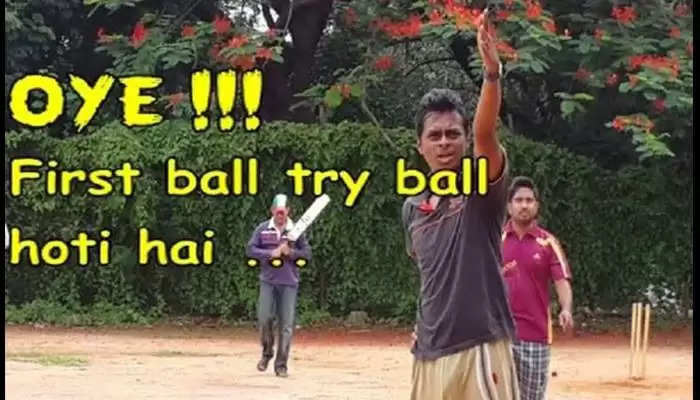If you have played gully/street/backyard cricket, you must have heard ‘try ball’ numerous times in your life. It’s a rule that only applies to the above mentioned format of the game.
NOTE: This article is based on a Quora thread.
TITLE: I have never seen a trial ball being bowled in an international cricket match. How was it incorporated in street cricket?
In street cricket you will find some of the rules mentioned below
- If you have played a master stroke but it landed at neighbors house or garden then you are out.
- There could be no runs behind the wicket
- Only ground shots are allowed any direct shots beyond the decided boundary may not be six, it could be out.
- There will be no LBW or no concepts of no or wide balls.
- There could even be restrictions of bowling speed.
- Bowlers can even bowl legitimate under arm or throw balls.
- There can be a baby over for a bowler to bowl only 3 balls to end the over.
If their are two parallel streets and peoples are playing cricket at both the streets then the playing rules between those streets might differ. So street cricket is situation and need based whereas International cricket is rule based which is governed and implemented by ICC.
This is not similar to the difference of street food and when same food is cooked at an international hotel. In between those foods there could be difference in the quality, price and presentation but ingredients to make that food will remain same. That’s not the case here, so difference between Street cricket and International Cricket can’t be compared at all.

Now coming back to try ball in Cricket when there was no governing body and people made their own rules based on the match (similar to today’s street cricket), trial ball was introduced at that time and was also known as Practice balls. Gradually it adapted at bigger matches too.
The introduction date of trial balls are unknown but according to R. S. Rait Kerr (The Laws of Cricket 1950), trial balls were discontinued in 1838, but the 1920 edition of another book mentions ‘the abolition of try balls in 1911’, and this later date seems to be supported by a match report from 1903. In any case, modern day cricket have never had this rule of trial balls, hence you have never seen it.
- Have you ever witnessed a 12th man or player from playing eleven umpiring when his own team is batting in an international match?
- Have you ever witnessed rule being changed about legitimate catch to one bounce allowed in an international match?
- Have you ever witnessed 3 stumps at strikers end but only one stump at non strikers end in an international match?
- Have you ever witnessed batsman being given out for hitting the ball way out of ground or shattering glass window/advertisement board in an international cricket?
There many such absurd rules that are followed in gully cricket(street cricket) that you won’t witness in international cricket. No one would be sure of the origin of such rules or customs.

P.S: I strongly feel the try ball was introduced by a bully who got out on first ball but as he was the only one with the bat, he had his way and called that first ball as try ball. Just a theory, can’t confirm.
The question is funny but interesting
Plainly speaking, try ball just a so-called smart trick to play one extra delivery before the start of the game. Nothing else. And, it happens mostly when kids are involved.
We can assume that try ball could be in existence ever since cricket was brought to the streets and inside housing societies. :p
Professional cricket has no such thing called try balls.
They have pre-match net session where they play as many traisl balls they want before starting the game. :p
***
You can follow the thread here: Quora

